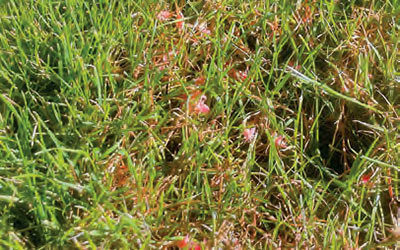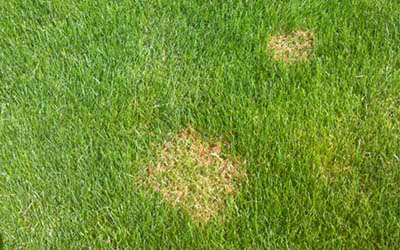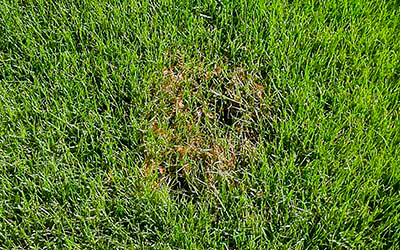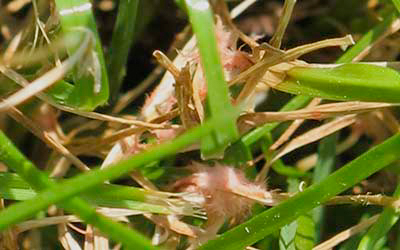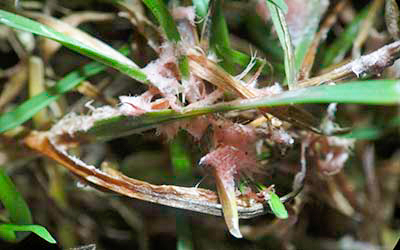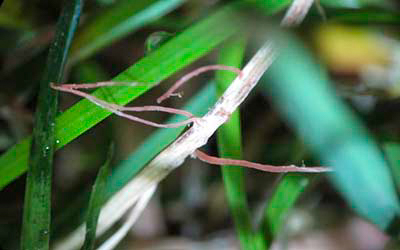Laetisaria fuciformis
![]()
![]()
![]()
![]()
![]()
![]()
Hosts
Kentucky bluegrass
Perennial ryegrass
Fine fescue
Disease description:
Red thread occurs in mid-spring or late fall in Missouri during cool to moderate temperatures and periods of heavy dew or humidity. Stand symptoms are tan or white, roughly round patches ranging from 4 inches to 2 feet in diameter. The patches may have a reddish appearance due to the presence of thick strands of reddish pink sclerotia of the pathogen. These sclerotia give red thread its name and are survival structures that remain in the thatch and lead to disease reoccurrence. Small tufts of mycelium are often evident during the early morning hours. An associated disease, pink patch caused by Limonomyces roseipellis, may occur in the same area as red thread.
Control
Red thread impacts turf that is growing slowly, so adequate fertilization can often result in large reductions in disease occurrence. Water deeply and infrequently during theearly morning hours to reduce leaf wetness duration. Prune trees and shrubs to increase air movement and allow for sunlight penetration. Collect clippings from infected areas to minimize disease spread. Fungicides are available for red thread control, but cultural controls are usually sufficient to manage the disease.
Images
